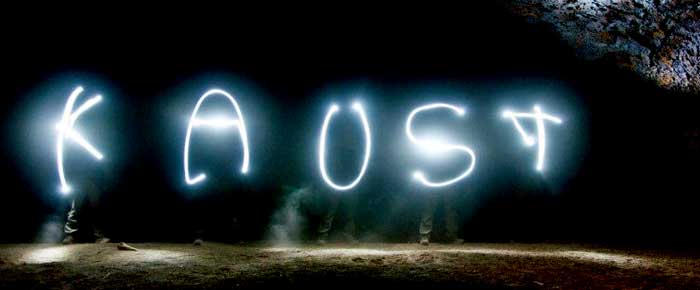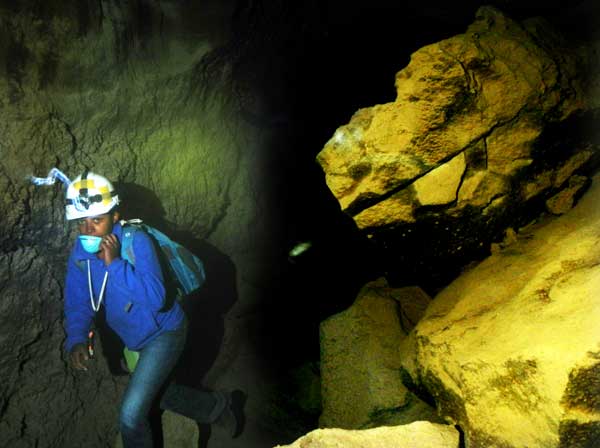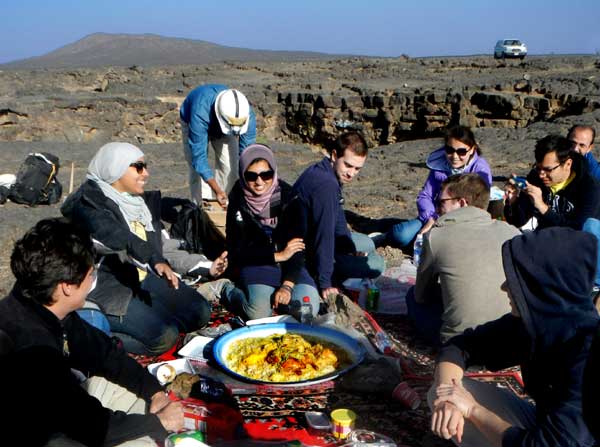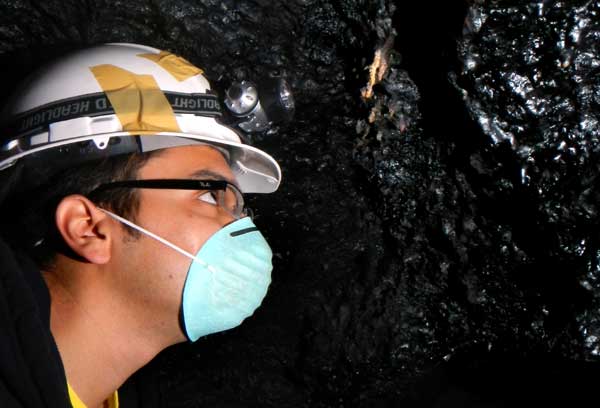
Deep
inside Hibashi cave, students use flashlights to spell out the name of
their university, no easy task to photograph! The credit for this great
shot goes to Islam Almasri and Manar Alomairi. King Abdullah
University of Science and Technology (KAUST) is an international,
graduate-level research university located 80 kilometers north of
Jeddah, Saudi Arabia. Staffed by many of the world's leading experts in
various tecnical disciplines, the school has been in operation for only
a few years, but has already made quite a reputation for itself. "What
an absolutely spectacular place!" commented environmental advocate
Philippe Cousteau Jr when visiting KAUST. "This place is a hotbed of ideas and
potential."
 Every January, KAUST holds a three-week Winter
Enrichment Program (WEP) aimed at broadening students' horizons and
offering them new experiences. This year, one of those new experiences
was a three-day course on Saudi Arabia's limestone and lava caves.
Immediately after the course, on January 16, 2013,
twenty-four adventurous students and professors headed for Taif and Hibashi Cave
on a two-day expedition: a significant event, since no scientific
studies of this extraordinary cave have taken place since the year
2004, when Hibashi was declared
one of the ten most important lava caves in the world, mineralogically
speaking. Every January, KAUST holds a three-week Winter
Enrichment Program (WEP) aimed at broadening students' horizons and
offering them new experiences. This year, one of those new experiences
was a three-day course on Saudi Arabia's limestone and lava caves.
Immediately after the course, on January 16, 2013,
twenty-four adventurous students and professors headed for Taif and Hibashi Cave
on a two-day expedition: a significant event, since no scientific
studies of this extraordinary cave have taken place since the year
2004, when Hibashi was declared
one of the ten most important lava caves in the world, mineralogically
speaking.
On this occasion, a
sample was taken of the basalt in which the cave was created in the
hope of age-dating this flow for the first time. The visitors also took
samples of the cave's soil, bat guano and of a rock-dove "guanomite"
just inside the cave entrance. In addition, a study of Hibashi's many
bones and coprolites was initiated. Here are a few photos taken by
members of the KAUST team. Abu Dahl

KAUST
students make their way down a long slope into Hibashi Cave
(Photo
by Sigurjon Jonsson)

Signing
the cave register in the western passage.

Panoramic
view of cave and carpets, by Cody Dean. 
Who is watching whom? Hoby Razafindrakoto from Madagaskar eyes The Sphinx. 
Chicken kabsa...a long tradition for hungry cavers in Saudi Arabia. 
Juan Christancho of Mexico City studies a biostalactite on the fire-blackened ceiling.
|

